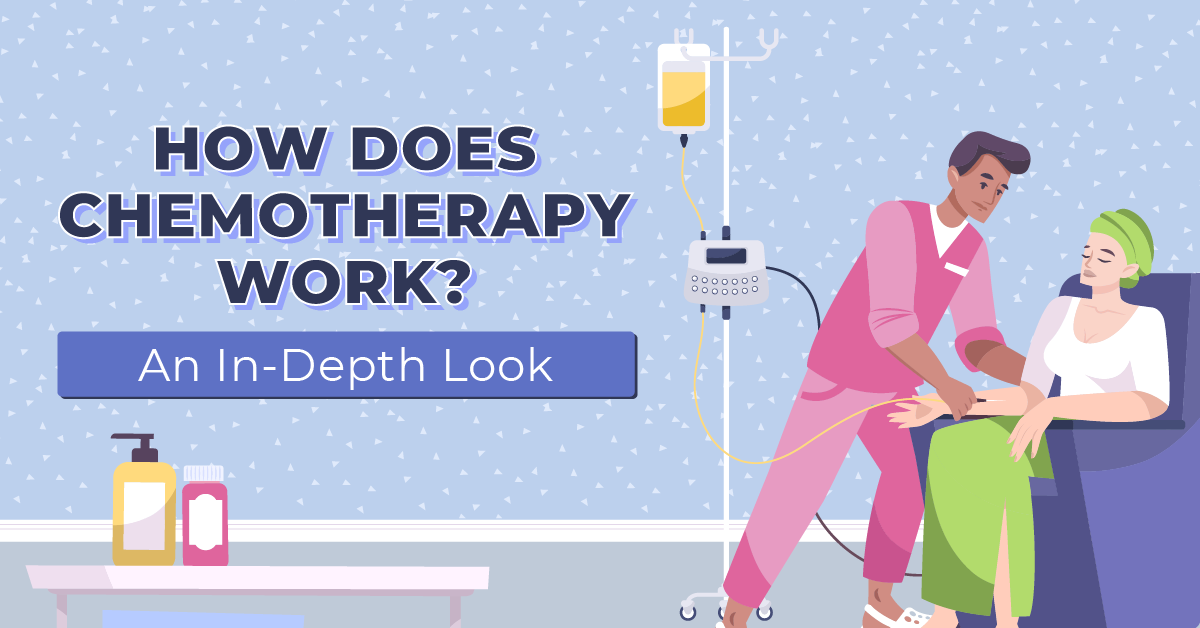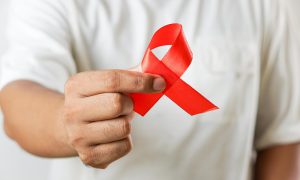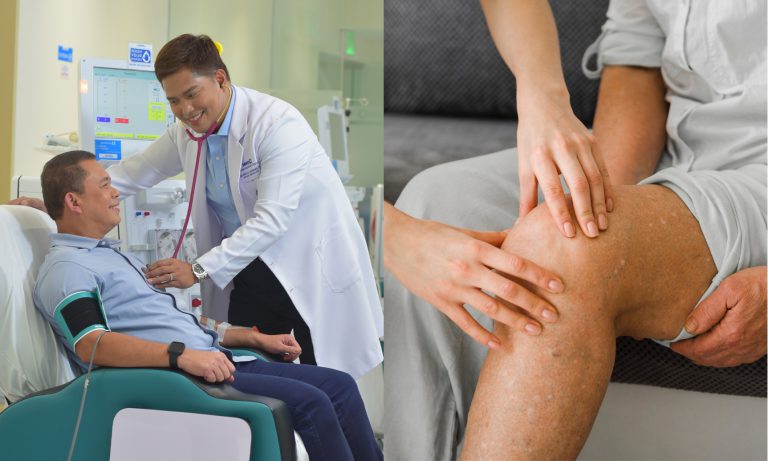It is devastating to receive news about yourself or a loved one being diagnosed with cancer. However, early detection is vital in winning the fight against this disease. In 2020, 19.3 million new cancer cases were reported, and almost 10 million people succumbed to cancer.
In the Philippines, there were 153,751 new cases in the same year, claiming 92,606 lives at a 16.5% chance of developing the disease before reaching the age of 75.
While a cancer diagnosis causes a major concern, early detection increases the chance of treatment leading to remission, or a decrease in signs, symptoms, and pain. Chances of survival are also higher if cancer is diagnosed when still confined to the organ of origin.
The five-year survival for breast and prostate cancer with early detection and treatment at the early stages of the disease is 90% and 98%, respectively, with survival rates remaining high at ten years.
One of the most common and most effective treatments for cancer is chemotherapy. But how can it help fight cancer? This infographic will help illustrate how chemotherapy works, what it contains, how it kills cancer cells, and chemotherapy side effects.
What is Chemotherapy?
Chemotherapy is a drug treatment that uses strong anti-cancer drugs to kill rapidly growing cells in the body. This procedure is generally used for cancer treatment because cancer cells grow and multiply much quicker than regular cells.
Chemotherapy can be the primary or sole treatment for cancer. It is also utilized to kill hidden cancer cells after different treatments, known as adjuvant therapy, and prepare for possible succeeding procedures, which doctors call neoadjuvant therapy.
Additionally, chemotherapy may assist in relieving signs and symptoms of cancer by killing some cancer cells. This method is commonly known as palliative chemotherapy.
How Long Does Chemo Treatment Normally Take?
Chemotherapy may be administered in cycles, which include a series of treatments and rest. Ideally, the patient or doctor may divide this period into one (1) week of treatment and three (3) weeks of rest in a four-week process. Resting allows the body to produce new healthy cells.
How Is the Chemo Treatment Given?
Oral
The chemo drug is taken by mouth in pill, capsule, or liquid form. This method of chemotherapy is more convenient since it can be administered at home. If the chemo drug is taken orally, it is critical to take the exact dosage at the designated time, and for the specific duration doctors have prescribed.
Intravenous
Intravenous (IV) chemotherapy treatments are injected into the bloodstream through a tiny, soft plastic tube called a catheter. The drugs can be administered rapidly through the catheter from a syringe in minutes, referred to as an “IV push.” The needle is used to place the catheter into the vein, forearm, or hand. Then, the needle will be removed, leaving the catheter in place.
An IV pump controls the flow of a mixed drug solution from a plastic bag through a tube that is attached to a catheter. An IV infusion may last from 30 minutes up to a few hours. Continuous infusions might be necessary and can last from one (1) to seven (7) days.
Another IV delivery option is through a chemo port implanted under the skin near a large vein in the upper chest area. This can be a good alternative for patients who have arm or hand veins that are difficult to find. A port is easily more accessible and provides a safer and more efficient delivery system than regular IV infusion.
Injection
This type utilizes a needle and syringe to push fluids or drugs into the body, also known as a “shot.” Chemotherapy injections are provided like rudimentary shots for boosters. They can be done directly into the muscles of the hip, thigh, arm, fatty section of the arm, leg, or stomach, just beneath the skin.
Cream
Chemotherapy cream is directly applied to an area of cancer on the skin as a cream, ointment, or gel. Creams containing chemotherapy drugs can be applied and used to treat certain types of skin cancer.
Direct Area Application
This chemotherapy treatment can be administered directly to one area of the body like the abdomen, chest cavity, central nervous system, or through the urethra into the bladder while sparing the rest of the body from the harmful effects of the drugs. These are intraperitoneal (within the abdominal cavity), intrapleural (chest cavity), intrathecal (spinal), and intravesical (within the bladder) chemotherapy, respectively.
Direct application to the cancer
Chemotherapy can be administered directly to the cancer or, after the surgery, where the main tumor is once present. Thin disk-shaped wafers that contain chemotherapy drugs can be placed near a tumor during surgery. The wafers would break down over time, releasing chemotherapy drugs.
Additionally, chemotherapy drugs may also be delivered by injection into an artery or vein that feeds directly to the tumor.
What Are the Side Effects and How to Manage Them?
Hair loss
Chemotherapy may lead to temporary hair loss, and it is recommended to wear a scalp cooling cap during chemo infusion to mitigate the effects. However, not all chemo drugs result in hair loss. Doctors may inform the patient if the type of chemo administered will lead to it.
Use sunscreen, wigs, hats, or scarves to protect the exposed scalp from the sun’s radiation to help alleviate this side effect.
Hampers the immune system
Chemo medication does not discriminate, affecting both cancer and immune system cells by destroying their genetic material. The immune system may take months to recover, so a patient should get plenty of rest, have a balanced diet, exercise, and avoid stress.
Some chemotherapy medicines cause loss of appetite and fatigue, among others, so consult an Oncologist to help manage these side effects.
Anemia
Red blood cells deliver oxygen to the other parts of the body. A drop in these red blood cells results in the heart working harder when the body is not supplied with enough oxygen. Getting rest, limiting activities, seeking help from friends and family, having a balanced diet, and remembering not to take time in standing up too fast as it may cause dizziness are ways to deal with anemia.
Patients can receive a blood transfusion to increase red blood cell count. Alternatively, doctors can prescribe patients medication called erythropoiesis-stimulating agents.
Anxiety
Psychoeducation may help anxiety by combining education with group or individual counseling. Alternatively, the patient can speak to a healthcare team about anti-anxiety or anti-depressant medicines.
Cancer patients exhibiting signs of anxiety occurring most of the day or nearly every day, which interferes with daily activities may also seek mental health evaluations to help deal with the psychological effects of the disease and chemotherapy treatment.
Depression
Depression is common with cancer patients coping with the illness. However, there is a reason to be concerned if a patient feels this way for an extended period, preventing them from carrying out simple daily tasks, there is reason to be concerned.
Depression can be mild and temporary, with periods of sadness. However, it can be lasting and severe, often called major depression or clinical depression.
Physical manifestations like tiredness, poor appetite, and changes in sleep patterns can be attributed to the chemotherapy side effects and linger after the treatment. Managing chemo-induced depression might include counseling, medication, or other specialized therapies.
How to Prepare for the Long-Lasting Effects
Consider buying wigs
A common side effect of chemotherapy is hair loss. The patient might want to wear a wig to experience a sense of normalcy and privacy.
Plan home care
Patients will need home care throughout the chemotherapy process. Trusted friends and family members may also be of help in carrying out daily chores and activities while undergoing chemo. Making a detailed list of tasks that need to be accomplished within the next few months makes it easier for home care assistants to complete them.
Hire a therapist
Chemotherapy treatment could prove to be a stressful experience. Finding a therapist to address mental or physical concerns may help the patient cope with the side effects, like emotional distress. While therapists do not necessarily solve all the patient’s problems, these professionals can provide helpful expert viewpoints to help them handle the mental health challenges.
Make accommodations for work and childcare
If the patient has a full-time job, it is best to notify their employer that they need to undergo chemotherapy. Advanced notices provide the company time to adjust and give flexible working hours or even offer a work-from-home setup.
With patients who have young children, coordinate childcare with a trusted babysitter or relative, and formulate backup options in case of availability changes.
Schedule follow-up appointments
Care for cancer patients does not conclude after the active treatment. It is imperative to conduct follow-up appointments with the patient’s healthcare team to identify the possibility of the cancer returning, manage its side effects, and monitor overall health.
Fighting Cancer
Cancer is a serious illness, and it is crucial to maintain good health and have regular checkups to prevent and detect this disease in its early stages. But in case a patient is already diagnosed and chemotherapy is prescribed, it should be done immediately to keep the cancer from spreading to different organs.
The fight against cancer can be long and hard, and only the best healthcare facility is where you would want to get treatment. Contact Makati Medical Center today and let us provide exceptional cancer care from diagnosis to post-chemotherapy treatment for you or a loved one battling this debilitating disease.












